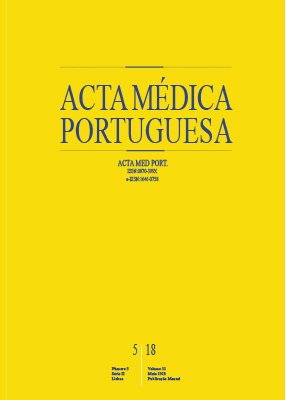Giant Peritoneal Loose Body: Case Report and Review of Literature
DOI:
https://doi.org/10.20344/amp.9177Keywords:
Calcinosis, Peritoneal DiseasesAbstract
Peritoneal loose bodies are usually diagnosed incidentally. Only a few cases are documented in the literature. The pathophysiology of this condition is not fully known and its origin may possibly be related to the twisting and separation of epiploic appendages. The authors describe the case of a patient with a spherical solid lesion 6 cm in diameter, identified incidentally in the pelvic cavity of a 64 year old man. The patient underwent laparotomy and a free ovoid shaped white body was identified. Histological examination described a calcified and encapsulated mass with a steato-necrosis core. A review of all cases of giant peritoneal loose bodies described in the literature is included. Surgical excision is recommended when the giant peritoneal loose body diagnosis is uncertain or when they are symptomatic. Doctors should be aware of its existence in order to establish a proper diagnosis and treatment plan.
Downloads
Downloads
Published
How to Cite
Issue
Section
License
All the articles published in the AMP are open access and comply with the requirements of funding agencies or academic institutions. The AMP is governed by the terms of the Creative Commons ‘Attribution – Non-Commercial Use - (CC-BY-NC)’ license, regarding the use by third parties.
It is the author’s responsibility to obtain approval for the reproduction of figures, tables, etc. from other publications.
Upon acceptance of an article for publication, the authors will be asked to complete the ICMJE “Copyright Liability and Copyright Sharing Statement “(http://www.actamedicaportuguesa.com/info/AMP-NormasPublicacao.pdf) and the “Declaration of Potential Conflicts of Interest” (http:// www.icmje.org/conflicts-of-interest). An e-mail will be sent to the corresponding author to acknowledge receipt of the manuscript.
After publication, the authors are authorised to make their articles available in repositories of their institutions of origin, as long as they always mention where they were published and according to the Creative Commons license.









